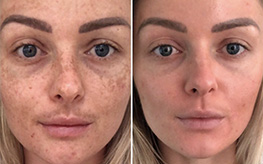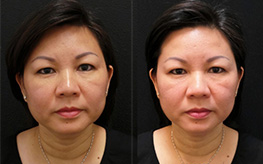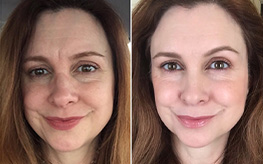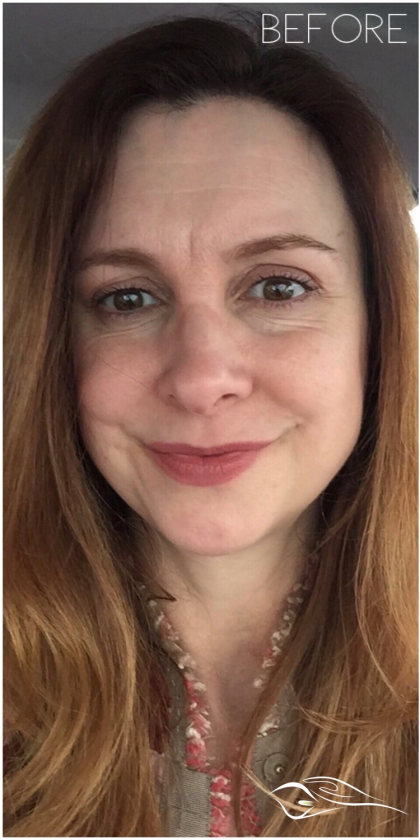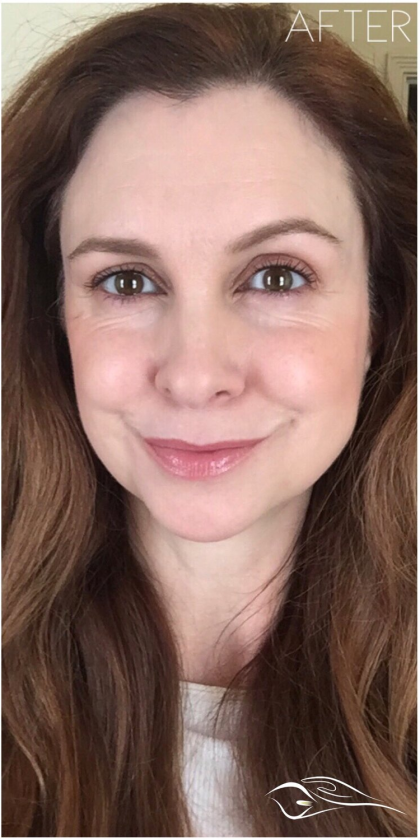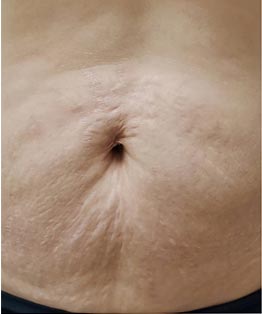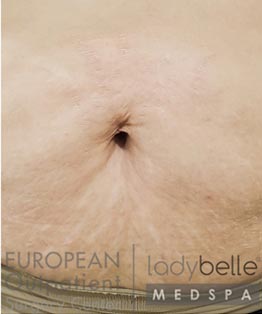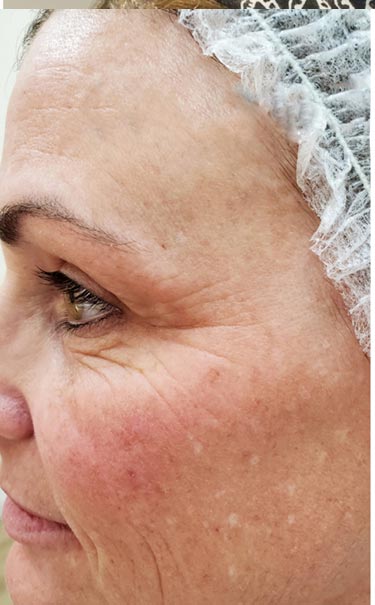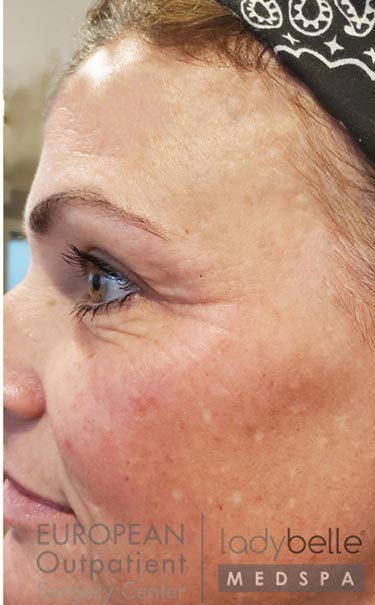Plasma Fibroblast
Conveniently located to serve the areas of Fountain Valley, CA

Plasma fibroblast is a non-surgical, minimally invasive treatment that uses a plasma pen to deliver precise and controlled energy to the skin. This triggers the body’s natural healing process, leading to skin tightening and the reduction of fine lines, wrinkles, and other signs of aging.
Plasma Fibroblast is a revolutionary, noninvasive alternative treatment to traditional surgery and perfect for facial rejuvenation. The treatment helps eliminate excessive tissue that causes sagging skin, unwanted wrinkles, stretch marks, and even diminish scarring. It also diminishes the risk, pain, and downtime associated with traditional invasive surgery. Our technicians use the fibroblast plasma treatment to eliminate signs of aging by tightening and lifting sagging skin.
Contents
Before and After Photos
Considerations
- If you have sagging or excess eyelid skin
- If you have sagging jowls, neck or neck lines
- If you have loose skin on knees, hands, elbows
- If you have lines and wrinkles around the mouth
- If you have loose skin or stretch marks on stomach
- If you have acne scars
- If you have sun damage or hyperpigmentation
Benefits
- No injectable anesthetic required
- No cutting of the skin
- No stitches required
- Very low-risk procedure
- Minimal side effects and far less downtime
- Quick and easy procedure
- Can return to work the same day
- No thinning of the skin
- No injectable anesthetic required
Cons:
- High risk of hyper or hypopigmentation for people with darker skin
- Not recommended if you are pregnant or breastfeeding
- Not recommended if you have diabetes and healing disorders
- Not recommended if you have metal plates, pins, or other implants
- Not recommended if you have cardio-vascular deficiencies including severe uncontrolled blood pressure
- If you have a pacemaker or any other medical device with an electrical current
- Not recommended if you have a current or recent hemorrhage
- Not recommended if you have had malignancy and chemotherapy in the past 3 years.
- Not recommended if you suffer from auto-immune disease or other illnesses which affect the immune system
Ideal Candidate
- You want to remove upper and lower eyelid sagging, bags, and lines
- You have crow’s feet
- You have forehead and frown lines
- You have lines around the mouth
- You have lines and wrinkles on the
- neck and chest
- You have smoker’s lines
Preparation
On the treatment day, it is recommended that no make-up, moisturizer is worn on the treatment area. Just come in with clean skin, we suggest taking an antihistamine one hour before your appointment. In the weeks leading up to your procedure, please follow these recommendations:
Avoid any kind of tanning (spray tanning, tanning injections, sun tanning, and tanning beds) for 2 to 4 weeks before your treatment. Ideally, you should try to use SPF5O to prep your skin for 2 to 4 weeks before your treatment, especially if you are naturally darker-skinned. You may even wish to consider using a natural Tyrosinase Inhibitor to helps ensure there is no overproduction of pigment in the skin aka hyperpigmentation.
Avoid any other type of procedures on the same area which you intend to have treated with Plasma Pen, such as laser treatments, chemical peels, Botox, fillers, as this may prevent your treatment from being performed by your technician at the time you want it. No facial acids (Retin A, salicylic, glycolic) 14 days before or 21 days after Plasma Pen. No Botox or fillers 21 days before or after Plasma Pen. No Micro-needling/PRP 21 days before or after Plasma Pen. No laser or peels (depending on the intensity of peel) for 90 days before or after Plasma Pen. For surgical procedures like facelifts, you must wait at least 9 months postop/before Plasma Pen.
Our medical professionals will carefully evaluate your skin to determine the best plasma fibroblast treatment for your individual needs and skin type. Our treatments are quick, comfortable, and safe, with little to no downtime required.
Procedure
- In preparation, your face will be thoroughly cleaned
- Your skin will be numbed with local anesthetics.
- Micro charges of plasma energy are applied to the skin in a noncontact way via a wand. The skin in the area will be heated.
- Sublimation of the tissue in very superficial levels will occur eliminating excess tissue and reducing or in some cases even eliminating wrinkles and saggy tissue.
- Treatment time will last from 45 minutes and up to several hours depending on the size of the treatment area.
- After laser resurfacing is completed, your technician will apply a specialized dressing to protect the treated tissues.
Recovery
You can expect to have some redness and swelling immediately after the procedure and for a few days following. Tiny dark brown spots will be seen where the individual micro dots have been placed. You will be provided with post treatment balm to apply to the area. The dark spots should be left to fall off naturally as these are protecting the skin underneath. After about 5 days to a week, these will fall off and the skin may still be slightly red. Do not use makeup after the treatment, as it is generally not sterile. Mineral makeup can be worn 24-48 hours after the treatment. Sun protection must be applied to protect the healing skin. No exfoliators or harsh cleansers can be used in the week following treatment. You should also avoid rubbing or scratching the treated area.
Results
The positive effects of treatment will be noticeable immediately after the first treatment and continuing over 4 weeks. A Fibroblast is more than a simple tightening treatment so the effects should last as long as they would with invasive surgery. Like all surgical and cosmetic procedures, the effects of fibroblast are not entirely permanent as it does not stop any further aging, However, the results you get should last you for many years.
The number of treatments required will vary according to the area being treated, skin’s laxity, the desired degree of correction, and the individual’s response to the treatment. Most clients see results instantly and this continues to improve over the course of the following 8 weeks. Further treatments can be carried out to get better results, although it is uncommon to require more than two treatments.
Contact
Say goodbye to fine lines and wrinkles and hello to a youthful, revitalized appearance with our Plasma Fibroblast services. Contact us today to schedule your consultation and learn more.

